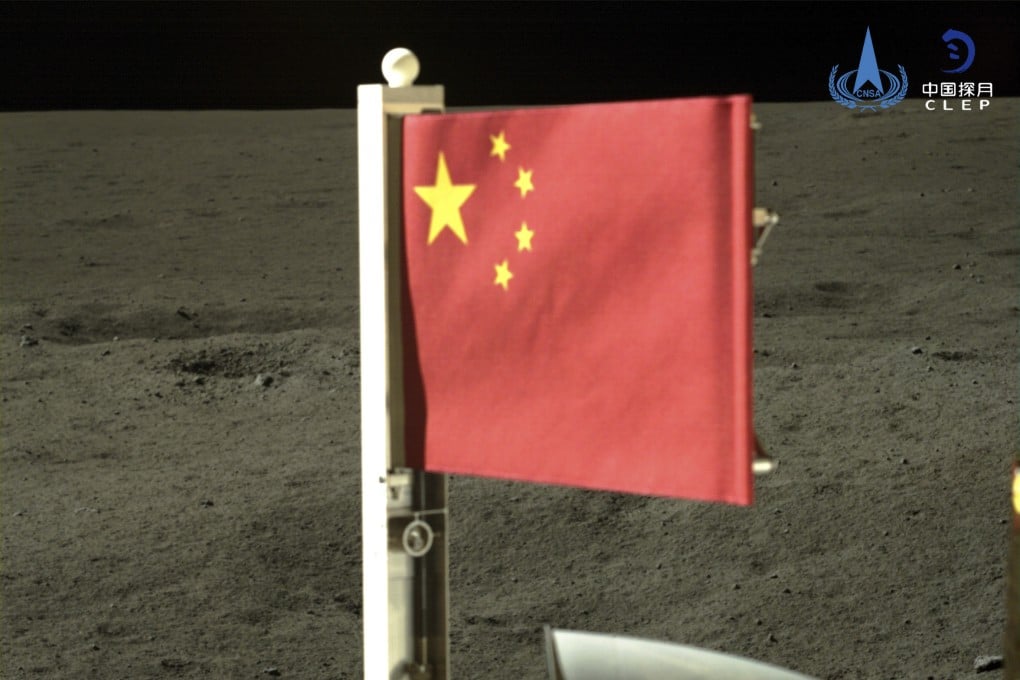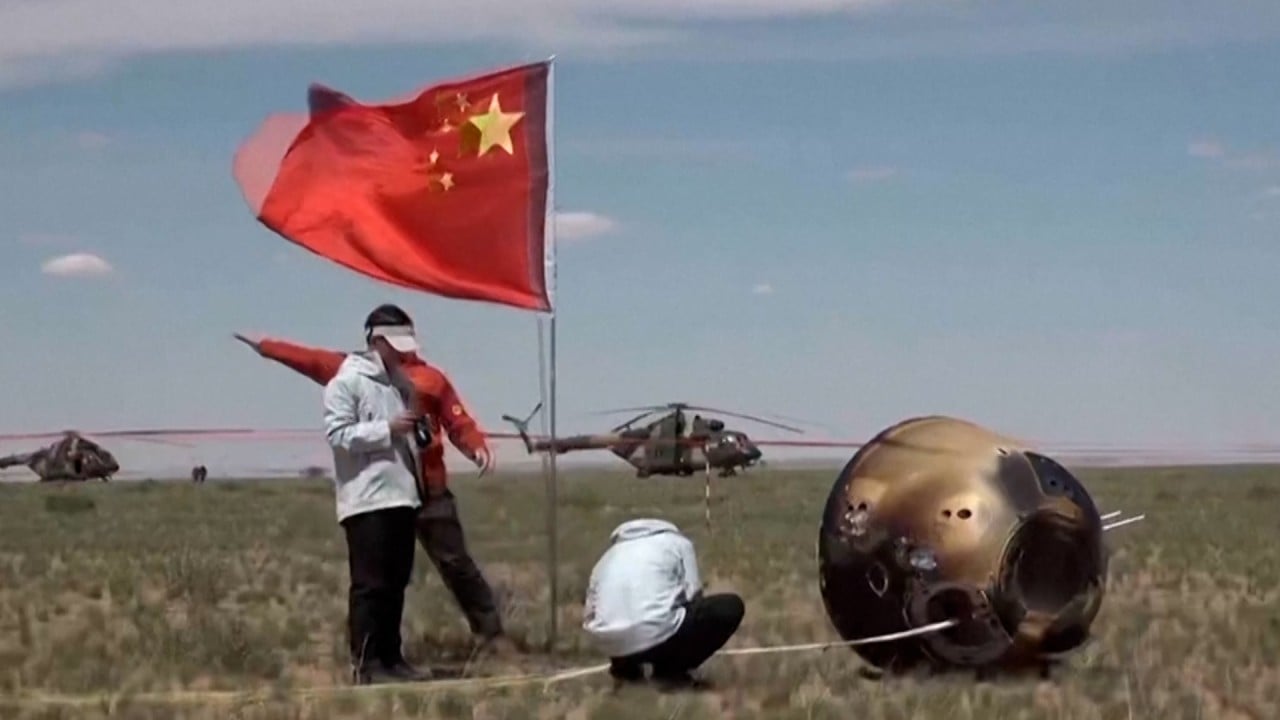Chinese team finds first trace of lunar water, a big step towards understanding the moon
- Scientists find hydrated mineral ‘enriched’ with molecular water based on soil samples returned by Chang’e-5 mission in 2020

Chinese scientists have found water molecules in lunar soil for the first time, a discovery that could be fundamental for understanding how the moon evolved and how to exploit its resources.
Samples brought back by American Apollo astronauts decades ago revealed no sign of water and led scientists to conclude that lunar soil must be completely dry, according to Nasa.
The research – carried out jointly by researchers from the Beijing National Laboratory for Condensed Matter Physics and the Institute of Physics of CAS and other domestic research institutions – was published in the peer-reviewed journal Nature Astronomy on July 16.
The researchers ruled out the possibility that the water-bearing mineral was contaminated by terrestrial sources or rocket exhaust.
But one geochemist said he expected the team to find more evidence in their further study.
“If this water-bearing mineral is present in the lunar samples, more than one piece should be found,” said the scientist who asked not to be named and was not associated with the study.
